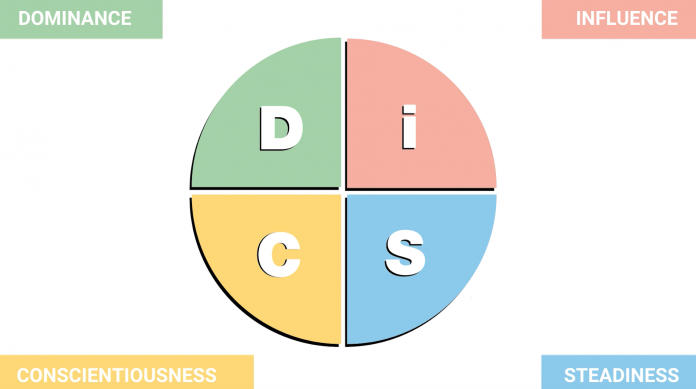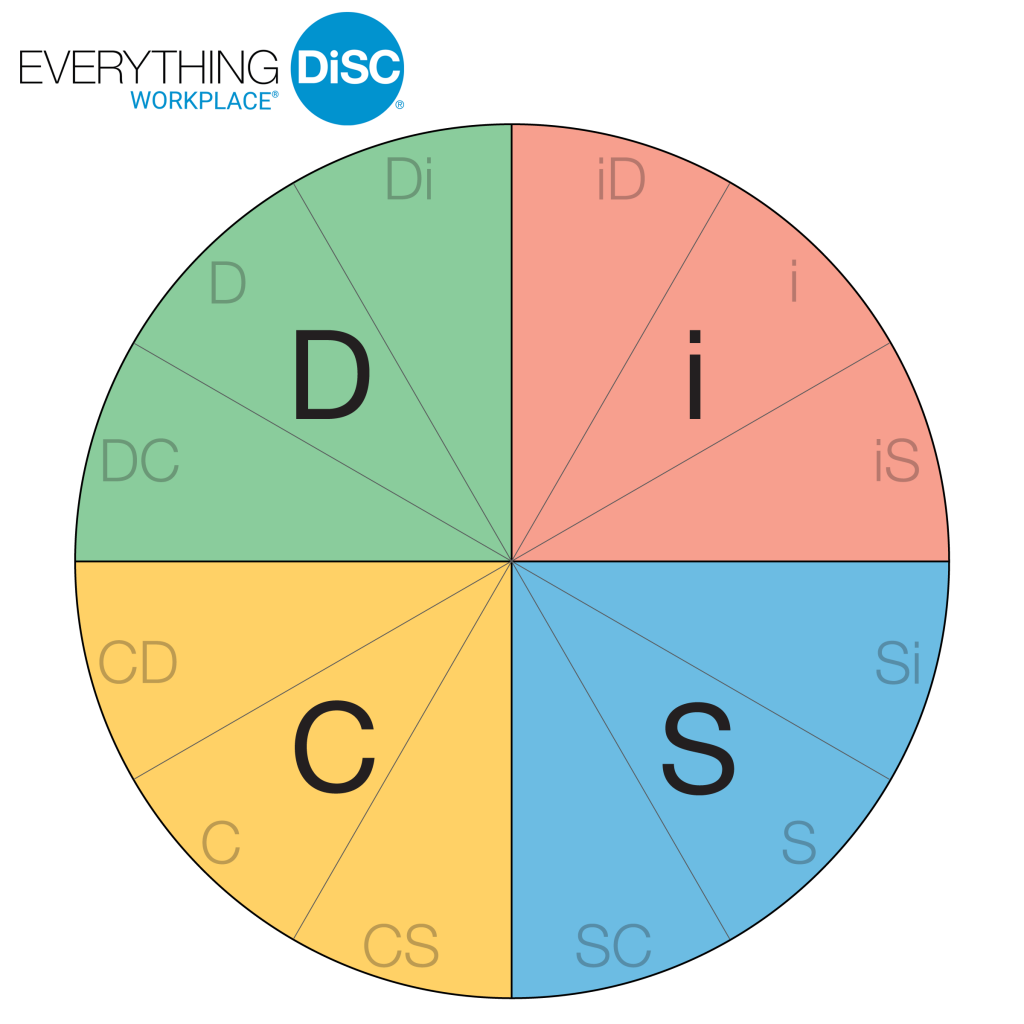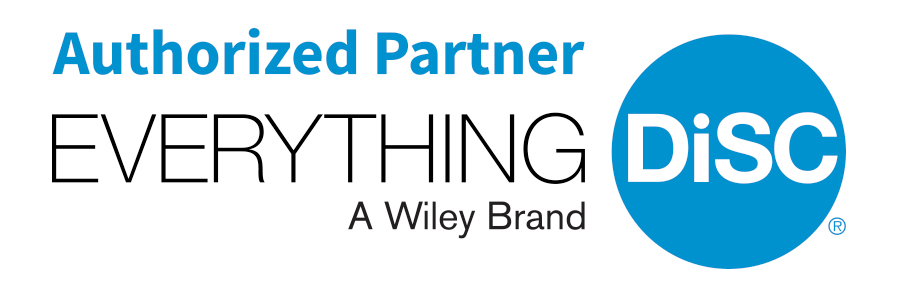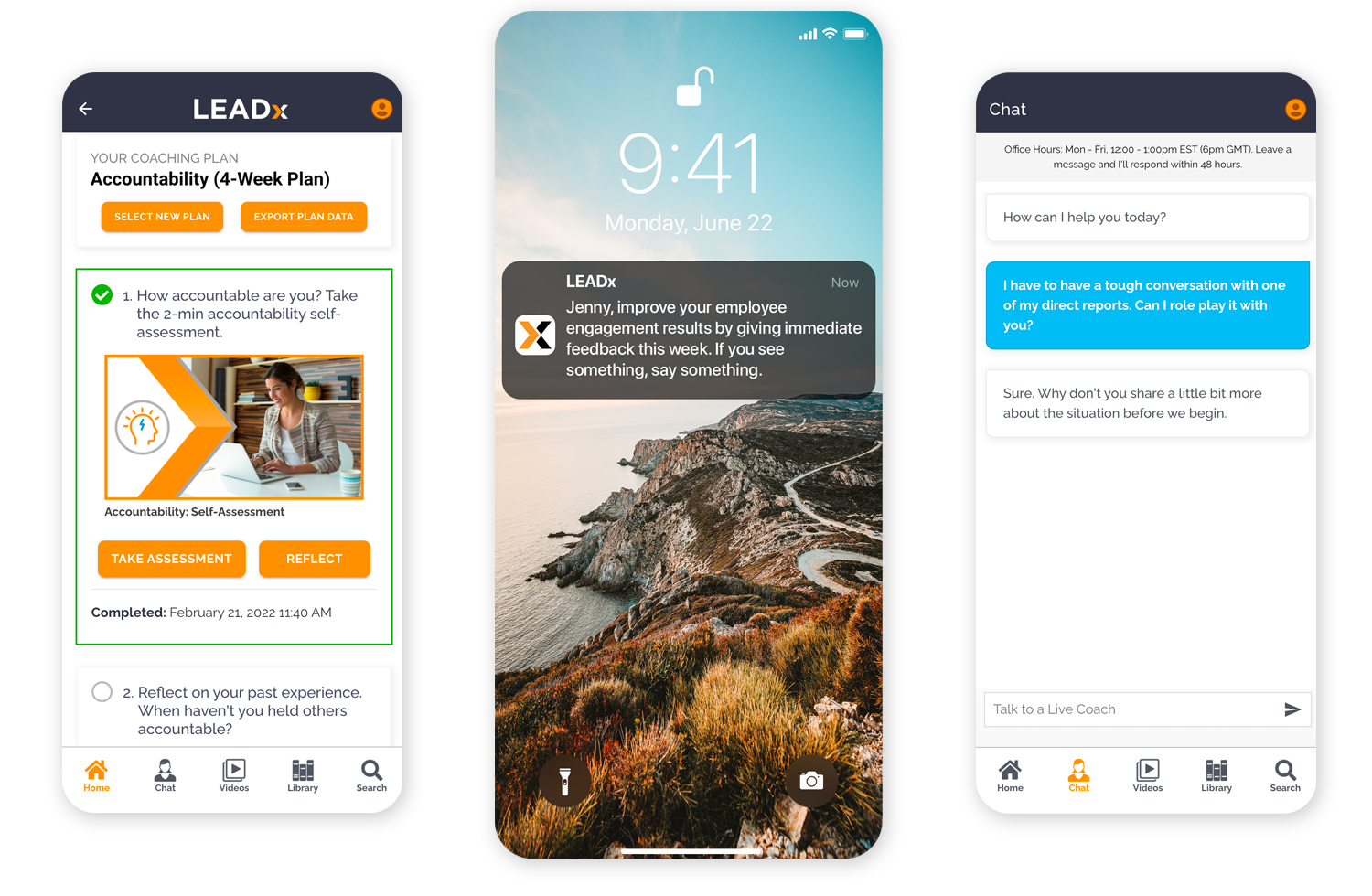
The Ultimate Guide to the DiSC Assessment and Personality Test
Thank you for visiting this resource on the DiSC assessment. Our vision is to spark the next 100 million leaders and offering free resources like this one is just one small way we will succeed. If you are interested in deploying DiSC in your organization just click here to connect with a LEADx consultant who can answer all of your questions.
What is a DiSC Assessment and Personality Test?
The DiSC assessment is the personality test that can unlock your potential as a leader, improve your communication at work and at home, and lead you to unlock the deeper insights of self-awareness. The DiSC assessment tools have been used by more than 40 million people to improve the work environment, get more done and reduce stress.
The assessment is composed of scientifically formulated questions that provide an accurate description of an individual's strengths, limitations, and workplace preferences. Understanding your unique personality has many benefits. Psychologists have identified several benefits to increased self-awareness including self-control, higher creativity, self-esteem, better able to break bad habits and form new habits, better goal achievement, and better relationships. You’ll want to give team members a DiSC assessment if you value:
- Foster teamwork (high cost of team dysfunction)
- Solve conflict (workplace conflict costs $359 billion)
- Increase employee engagement
What Does DiSC Stand For?
DiSC is an acronym and the letters D, i, S and C stand for:
D – Dominance
i – Influence
S – Steadiness
Each letter represents one of the four basic behavioral styles (although DiSC assessment results often reveal a combination of the letters, like Di or SC. Each style is associated with our primary natural behaviors.
What Are The DiSC Personality Types?
The official Everything DiSC Workplace assessment uses 12 different profiles, which include a mix of the four major types (e.g., Di, iD, iS, SC, etc.). However, many people just remember their “first letter,” which is their dominant type, tied to the original DiSC assessment.

DiSC Profile D – Dominant
People who are high in “D” are extroverted and outgoing and task-oriented. They tend to be direct, decisive, driven, and demanding. They typically have high confidence, are self-motivated, and are comfortable taking risks. They like to focus on the big picture, not details. People who have high “D” are frequently found in leadership positions.
What is the Shadow Side of High D? When the Dominant trait is overdeveloped, or when people high in D become stressed, they can become impatient, blunt to the point of being insensitive, may force decisions or take actions without first forming a consensus, and use their authority instead of persuasion to get what they want.
DiSC Profile i – Influencing
People who are high in “I” are extroverted and outgoing, and people-oriented. They tend to be inspiring, impressionable, interactive, impressive, and involved. They are typically vocal and animated. They like to engage others in conversation. Leaders who have high “I” energize others and are usually popular because of their social skills and charm.
What is the Shadow Side of High I? When the Influencing trait is overdeveloped, or when people high in I are stressed, they can become disorganized by focusing too much on people that they overlook details and tasks. They tend to fear social rejection because they have a strong desire to be liked by others and will respond to pressure with verbal attacks.
DiSC Profile S – Steadiness
People who are high in “S” are more introverted and reserved, and people-oriented. They tend to be supportive, stable, sweet, and shy. They are typically calm, easy-going, and collected people. They like giving support, collaborating, and maintaining stability. When people who have high “S” are in leadership positions, they work hard to ensure harmony and balance.
What is the Shadow Side of High S? When the Steadiness trait is overdeveloped, or when people high in S become stressed, they often avoid conflict to preserve relationships. They are frequently the last ones to speak up or attract attention so they are easy to overlook. They may be limited by being indecisive and overly accommodating. They can fear change, loss of stability, and offending others.
DiSC Profile C – Conscientious
People who are high in “C” are more introverted and reserved, and task-oriented. They tend to be cautious, calculating, competent, contemplative, and careful. They are typically analytical, detail-oriented, and intentional. They value precision and have inquisitive natures, often appearing critical by asking many questions. Leaders who have high “C” expect everyone to follow their standards and make sure that everything is working the way it should.
What is the Shadow Side of High C? When the Conscientious trait is overdeveloped, or when people high in C become stressed, they can become evasive, avoiding conflict by changing the subject. They do not like fast-paced pressure and are likely to respond to it with an even slower pace due to uncertainty and confusion. They can be limited by overanalyzing, isolating themselves, and fearing criticism.
How Long Does a DiSC Profile Test Take To Complete?
The DiSC assessment only takes about 15 minutes to complete. You simply answer a series of questions about your own behavior, using a scale from strongly disagree to strongly agree. There are no right or wrong answers.
People often wonder how such an accurate personality profile can be completed so quickly. The answer: adaptive testing. That means you will be shown different questions, and fewer questions, based on your answers during the test. That way you only see the questions relevant to diagnosing your dominant behaviors using the DiSC system. No wasted questions, no wasted time!
Sending DiSC “Nudges” — How To Help People Apply What They Know
The huge chasm between what we know and what we actually apply back on the job has been called the “Knowing-Doing Gap”. It’s estimated that 40-85% of all training becomes “scrap learning”, relegated to knowledge forgotten or never applied.
Typically, DiSC is rolled out in workshops, often as part of new hire orientation or as part of a manager or sales class. While the “aha” moments are flowing in the workshop, too often the DiSC lessons learned are never applied back on the job. It doesn’t take a research study to see that we are all so “crazy busy” that we generally operate with short-term thinking in task-mode. It’s hard to remember our own style, others’ styles, and to take the pause—the long deep breath—to think and modulate our approach.
One way to scale and sustain DiSC in the workplace is with behavioral nudges. Imagine if you had a DiSC coach who could remind you every week of your profile and how to leverage it?

Imagine if your digital DiSC coach could remind you of your team members’ dominant styles? And could remind you how to leverage their natural strengths?

If you want an automated DiSC nudge-based reminder system, only LEADx offers the behavioral nudge engine that can be activated for you within minutes.
What’s the Deal With the Lowercase “i” in DiSC?
Great question, because you definitely want to look for the lowercase i. Here’s the story…the personality model known as “DISC” was created a long time ago and because that term is not trademarked, anybody can make up a bunch of questions and slap the word DISC on it. Sounds crazy right? But literally, you could have a high school student come up with a short quiz, launch a website, and slap the word DISC on it and start offering it for sale.
But the official DiSC assessment published by Wiley is called Everything DiSC®, with the lowercase “i”. (And LEADx is an authorized partner and provider of Everything DiSC.)
 Over a million people a year trust Everything DiSC as the most trusted, validated, and approved assessment available. If you aren’t using DiSC with the lowercase “i” you need to really investigate who made it up and what kind of validation testing they’ve done on it.
Over a million people a year trust Everything DiSC as the most trusted, validated, and approved assessment available. If you aren’t using DiSC with the lowercase “i” you need to really investigate who made it up and what kind of validation testing they’ve done on it.
What are the Benefits of Everything DiSC version of the assessment?
The Everything DiSC assessment is the most trusted DiSC profile available. Only Everything DiSC offers:
- TRUST – over seven million people, in over 100,000 organizations, have taken an Everything DiSC profile
- ACCURACY – the Everything DiSC reports average 20 pages each, providing those “aha” moments and “scary accurate” assessments for each participant
- RELIABLE – ongoing validity studies and research from psychologists ensure quality
- SUPPORT – Everything DiSC offers the most facilitator kits, tools, and activities of any provider
Why is the DiSC Assessment so Popular?
The Everything DiSC assessment has been used by over 7 million people around the world and is the most popular personality profile available. Its popularity is based on its combination of accuracy and simplicity. While there are other personality tests favored by psychologists for their accuracy (e.g., Five-Factor Model of Personality and the Big 5 Assessment), the average person isn’t able to remember their scores on a multitude of domains. With Everything DiSC, your major behavior is captured in a single letter, or letter combination, which is easy to remember, and easy to apply on the job.
Who Created the DiSC Assessment?
The father of DiSC was William Marston, a psychologist, who published a book in 1928 titled Emotions of Normal People (click here to download a PDF of the original book). In it, he explained his theory that people exhibit one of four separate behavior types: Dominance, Inducement (now called Influence), Submission (now called Steadiness), and Compliance (now called Conscientiousness).
Oddly, William Marston is also known as the creator of two other important things: the polygraph machine, and the Wonder Woman superhero character. It’s important to note that Marston created the idea of DiSC—the DiSC model of personality. But he didn’t create an assessment for how to measure it.
The first DiSC assessment was created in 1956 by Walter Clarke, an industrial psychologist. It was originally designed for use in businesses to choose qualified employees. In the 1970s, Professor John Geier created a DiSC assessment called the Personal Profile System. It was Geier's assessment that would eventually become the official “Everything DiSC”. LEADx is a certified provider of the Everything DiSC assessment.
How Much Does DiSC Assessment Cost?
A DiSC assessment can cost anywhere between $24 and $100 depending on the total number of people being assessed, and which type of DiSC profile you desire (e.g., for individuals, for managers, etc.). Each DiSC profile comes with a revealing highly detailed personalized report with time-saving application tips and effective tools to get more done with employees and coworkers. Click here if you would like to get a quote for using DiSC in your organization.
Is The DiSC Personality Test Accurate?
It is, if you are using the version with the lowercase “i” in DiSC. Because anybody is allowed to think up a test and slap the word “DiSC” on it, you have to be careful about the validity of the instrument. The Everything DiSC assessment is the version of DiSC you want because it’s been studied for over forty years. To determine if a tool is reliable, researchers looked at the stability of the instrument and the internal consistency of the instrument. Stability is easy to understand. In this case, a researcher would simply have a group of people take the same assessment twice and correlate the results. This is called test-retest reliability. The two-week test-retest evaluation shows values between .85 and .88 for all DiSC dimensions. This is considered very high.
Internal consistency is more difficult to understand. Here, we have the assumption that all of the questions (or items) on a given scale are measuring the same trait. As a consequence, all of these items should, in theory, correlate with each other. Internal consistency is represented using a metric called alpha. DiSC alpha ranges from .79 to .9 which are considered high.
When it comes to validity, The DiSC model proposes that adjacent scales (e.g., Di and i) will have moderate correlations. That is, these correlations should be considerably smaller than the alpha reliabilities of the individual scales. For example, the correlation between the Di and i scales (.50) should be substantially lower than the Alpha reliability of the Di or i scales (both .90). On the other hand, scales that are theoretically opposite (e.g., i and C) should have strong negative correlations. Data obtained from a sample of 752 respondents who completed the Everything DiSC assessment show the correlations among all eight scales show strong support for the model. That is, moderate positive correlations among adjacent scales and strong negative correlations are observed between opposite scales.
Look For Lowercase i in DiSC®
Look for the trademarked lowercase i in DiSC® to be sure you're looking at the assessment tool researched, validated, and published by Wiley. And click here if you’d like to connect with a LEADx consultant who can answer your questions.






